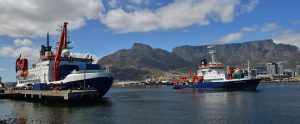
METEOR departing Cape Town. Picture credit Thomas Liebe from POLARSTERN
On time at 10:00 am the METEOR left the pier of the port of Cape Town. We are leaving our colleagues of POLARSTERN behind who will depart tomorrow evening. For me as the chief scientist on board this is the day we all have been working towards to since many weeks. All paper work is cleared, containers have arrived and equipment has been unpacked and installed in the respective laboratory. And finally during perfect warm and sunny weather the port of Cape Town slowly disappeared in the distance. Tabletop Mountain and the towering clouds are the last sign of Africa before we are just surrounded by ocean, sea gulls and some seals playing in the water.
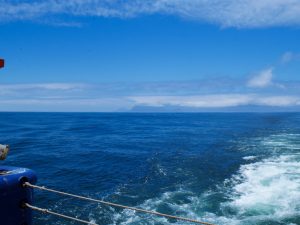
Cape Town slowly drops below the horizon
But there is no time to be romantic about leaving land because the work sets in and the first underway CTD stations are rapidly approaching. Just two hours later the first XBT gets launched into the deep blue ocean. And finally the METEOR stops for the first CTD station on the shelf with 300m water depths. Later the evening we trial the plankton net followed by a second CTD. Every hour a U-CTD is launched and every other hour an XBT. Only rarely stops the METEOR for a CTD station.
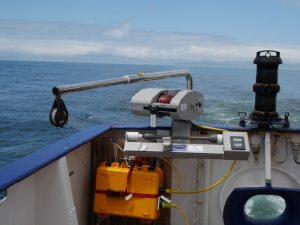
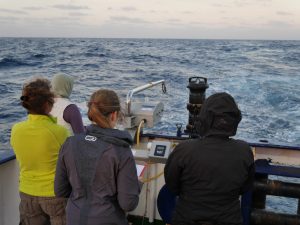
Deploying the underway CTD system from the stern of METEOR
Our first destination is an Agulhas eddy. A whirl of 200km in diameter, that was spotted in the satellite maps by our partner group in Paris. Our task is to move the ship into the ring. Observe its velocity structure and water mass properties. And finally launch three profiling Argo floats that will follow the eddy for hopefully many months.
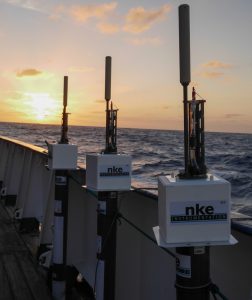
Three floats waiting to get deployed into an Agulhas ring
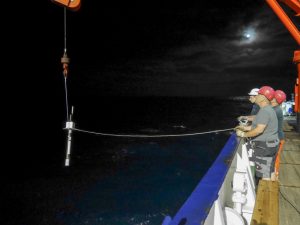
At night in the middle of the ring each float gets deployed
Personally I am very happy to be back on METEOR. It has been more than a year since I was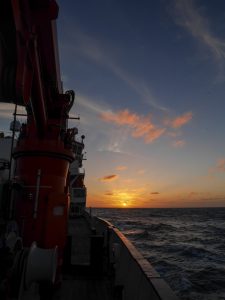 on board transiting the tropical North Atlantic between the Caribbean and Cape Verde Island. The waves are slowly picking up energy and METEOR rolls into the ocean. Our destination just of South America seems so far away today, but we all know it will come on us very fast.
on board transiting the tropical North Atlantic between the Caribbean and Cape Verde Island. The waves are slowly picking up energy and METEOR rolls into the ocean. Our destination just of South America seems so far away today, but we all know it will come on us very fast.
Post by chief scientist Martin Visbeck (GEOMAR and Kiel University)
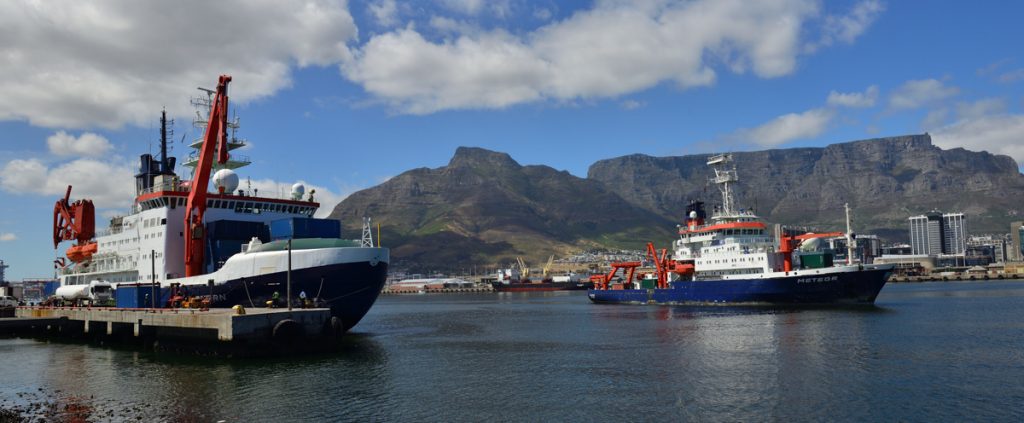
Floats deployed at night and at the full moon! These trajectories will reveal the mysteries of eddy transport… 🙂